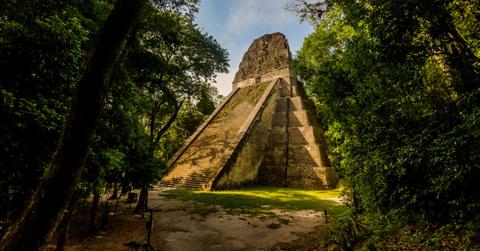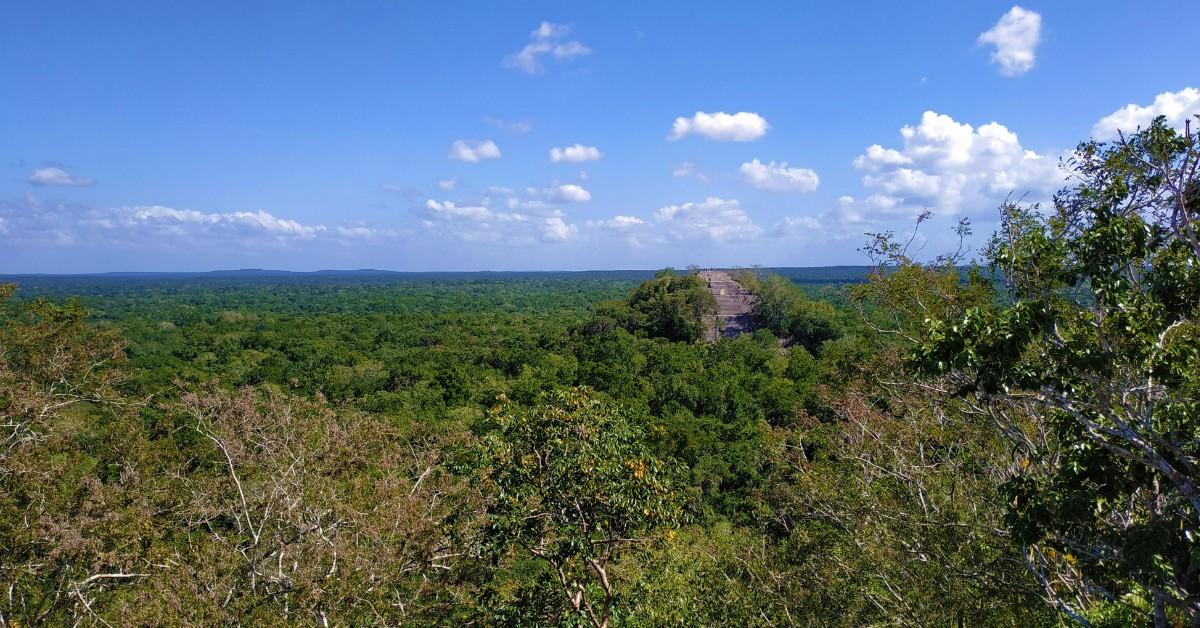Grad Student Accidentally Discovers a Lost Maya City in Mexico
It's likely that climate change led to the city's collapse hundreds of years ago.
Published Oct. 30 2024, 3:21 p.m. ET

A graduate student made the discovery of a lifetime while looking over some public data and images taken in the jungles of Campeche, Mexico — the Ph.D. candidate found a lost Maya city.
Maya is the correct term to use when referencing those people who spoke one of the dozens of languages that fall under the Mayan banner.
Keep reading to learn more about the unprecedented discovery of an ancient Maya city, including the reason why experts believe that the 50,000 people who once called the area home likely fled from the area.

A grad student found a lost Maya city while reviewing LiDAR maps.
Luke Auld-Thomas was reading LiDAR maps from 2013 online when he made the find, according to his professor Marcello Canuto, who shared the exciting details of the discovery with NBC News.
Auld-Thomas had pulled up some LiDAR maps — so named for the light detection and ranging equipment that is used to collect data by using lasers to map the topography of a given area — that had been commissioned to track carbon reservoirs in the region.
While scanning decade old data, Auld-Thomas uncovered 6,674 structures, including some pyramids similar to the famous Chichén Itzá designs that have become a popular tourist hot spot in Mexico's Yucatan.
It's believed that somewhere between 30,000 and 50,000 Mayas may have called this ancient city — which has since been named Valeriana, after a lagoon researchers say is located not too far from where the city was found — home back in its heyday.
According to a press release from Antiquity, the map used by Auld-Thomas (which was actually from 2013) was full of surprises.
"Our analysis not only revealed a picture of a region that was dense with settlements, but it also revealed a lot of variability," he explained. "We didn't just find rural areas and smaller settlements. We also found a large city with pyramids right next to the area's only highway, near a town where people have been actively farming among the ruins for years."
Climate change likely played a role in the collapse of the ancient Maya city.
While researchers have only been able to make some preliminary guesses about what went on within the confines of Valeriana, they're pretty confident in their theory that civilization likely ended in the region sometime between 800 A.D. and 1,000 A.D.
Professor Canuto believes that overpopulation may have made it hard for ancient Mayas to adapt to changing climates within the region.
"The growing consensus is that climate variability was a major factor causing stresses, adaptations and reactions, leading to more systemic unrest," the professor told NBC News.
And while his theory is still just an educated guess at this point, he hopes that future improvements to technology will allow researchers to learn more about what went on all those years ago, including what else lies beneath the canopy of other unexplored areas of the Mexican jungle.
That's because researchers are uncovering far more signs of civilization than they previously thought existed, especially in new areas like the east-central region Campeche.
"Given the environmental and social challenges we're facing from rapid population growth, it can only help to study ancient cities and expand our view of what urban living can look like," Auld-Thomas said in the Antiquity press release.
Hopefully this new discovery will help them get more funding to learn more about the people who called these jungles home all these years ago so they can find out more about what led to the region's collapse, and help modern civilizations from meeting the same fate.